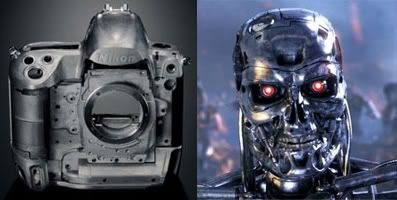The R-D1 originally retailed for over $3000, which makes it a non-starter with so many M8s and M8.2s on the used market now.
Pfft. The original R-D 1 used the sensor architecture out of the Nikon D70 series. A $3,000 camera with a Nikon D300s sensor package would send those used M8s (with their mediocre high-ISO performance, excess IR sensitvity, etc., etc.) to the bargain bin in no time.
I agree they'd have to do a better job on initial quality, but I think they've learned where the problems are (i.e. don't have Cosina install and calibrate the VF/RF system and
then ship the bodies off the Epson for the electronics installation.)
But there are two reasons this will never happen:
1) Epson made the R-D 1 to be an "image camera"... but because of the combination of initial quality problems, techno-centric reviewers who didn't "get" the concept, and the constant kvetching of prejudiced Leicaholics, all they got out of it was a black eye. I'm sure anyone at Epson who suggested a successor model would get sent to the corporate woodshed.
2) We fanatics don't like to admit it, but rangefinder cameras are a niche market, and digital RFs are a niche of a niche. There isn't enough volume in it to cover development expenses unless you can sell at a very high unit cost. The only reason Leica is able to stay in the game is that ex-druggie rock stars, wealthy Euro gents and Middle Eastern potentates are willing and able to pay almost anything for the magic of the L-word, subsidizing the relative handful of actual photographers who use the brand. The Epson brand didn't have that advantage, and I can't think of any other plausible brands that would either.
That's not to say someone couldn't introduce a modern-tech digital RF that would sell well enough to succeed on its own merits. But it would have to be something that could be sold as a special-purpose add-on to an existing DSLR system.
I suspect that either Canon or Nikon would have little trouble engineering an RF module that would read the distance-encoder information from their DSLR lenses and use it to drive an RF mechanism via a stepper motor. Imagine this module mated to the chassis of a D300s or 7D, or D3s or EOS-1... I'm not going to be holding my breath, though!


